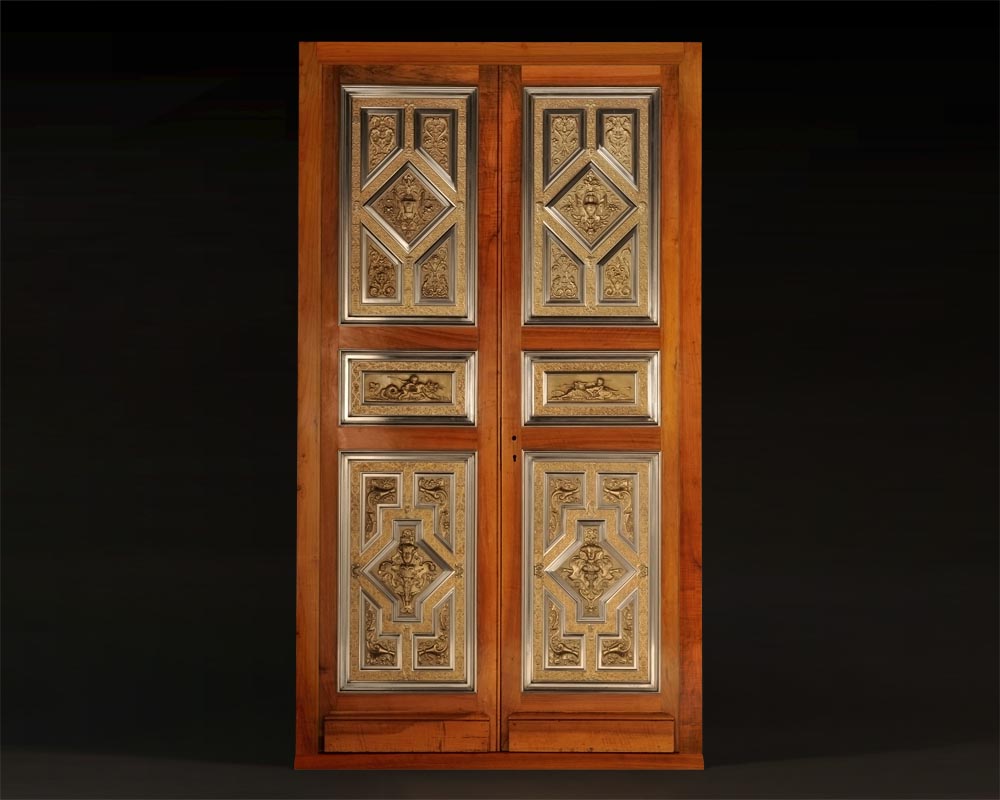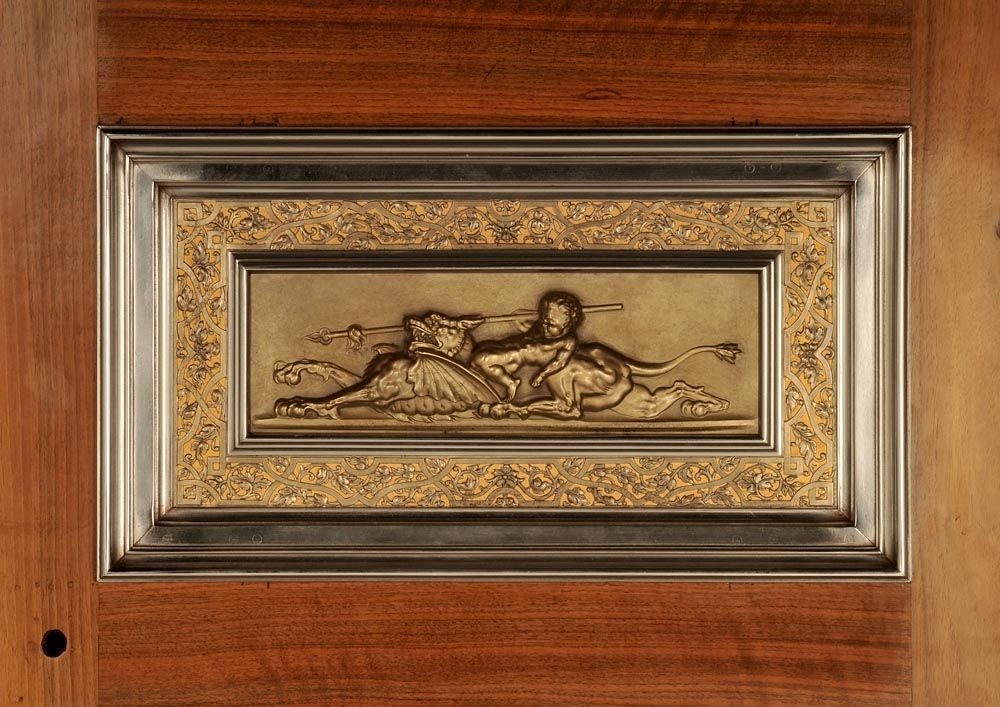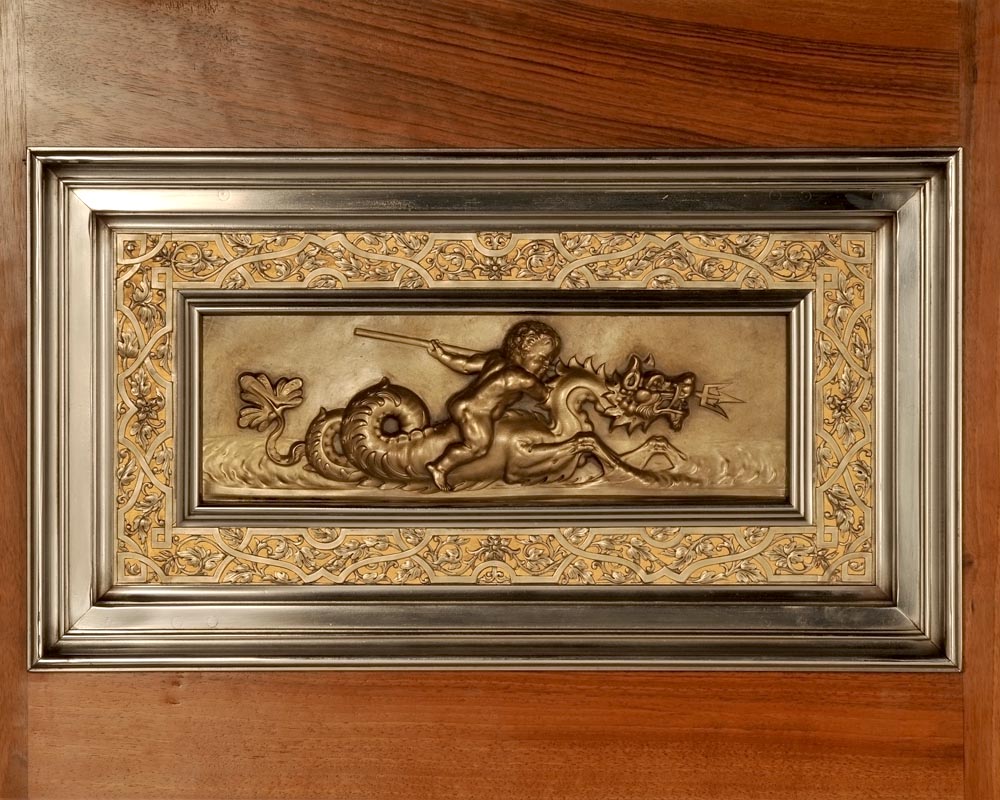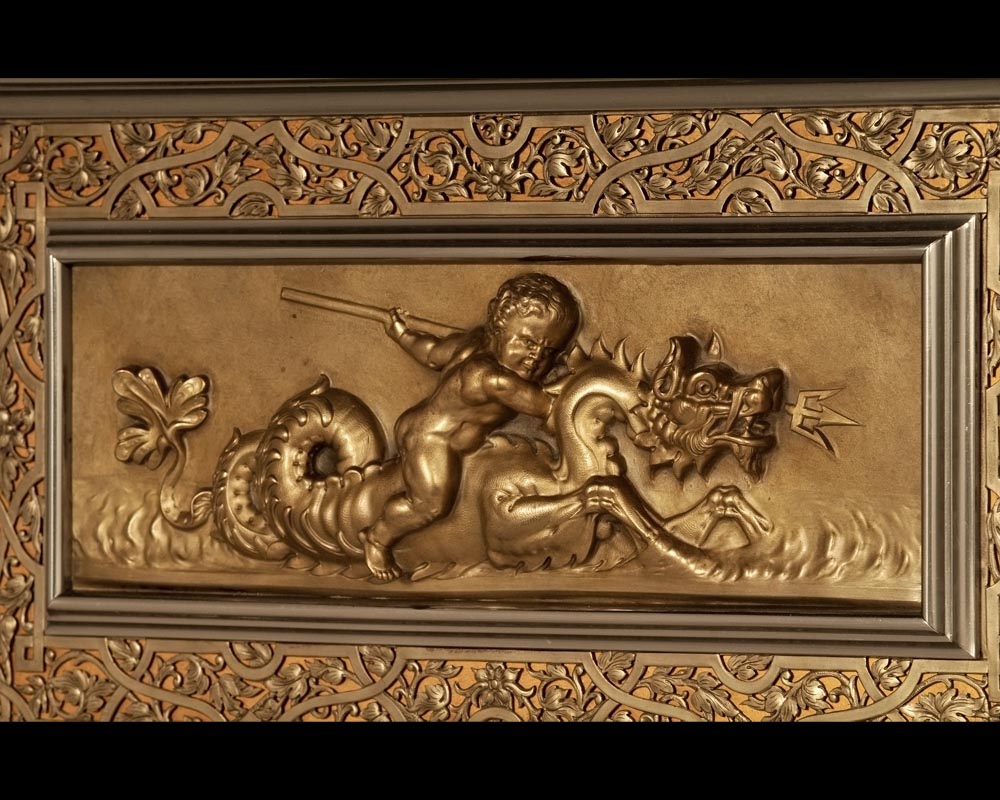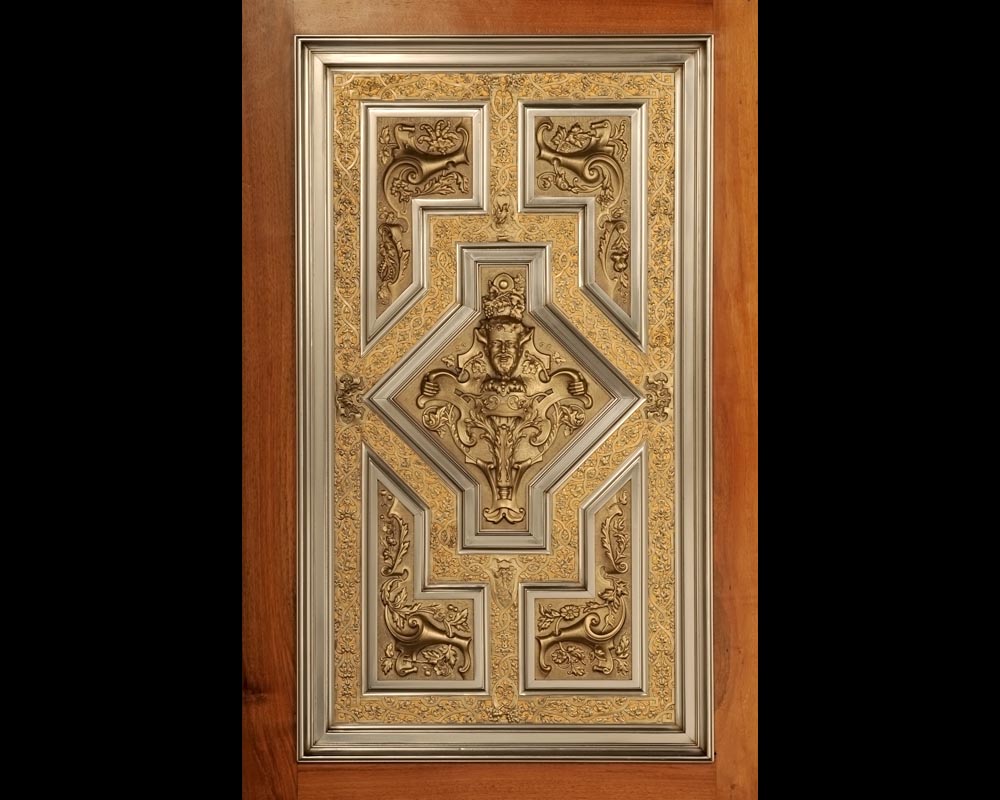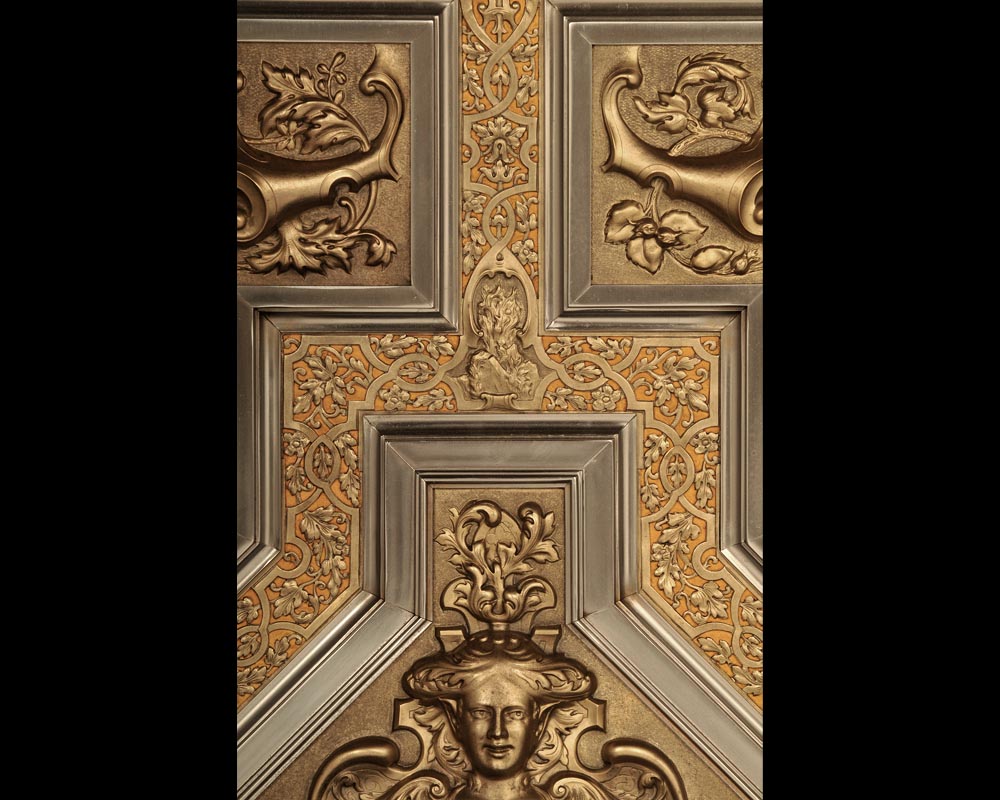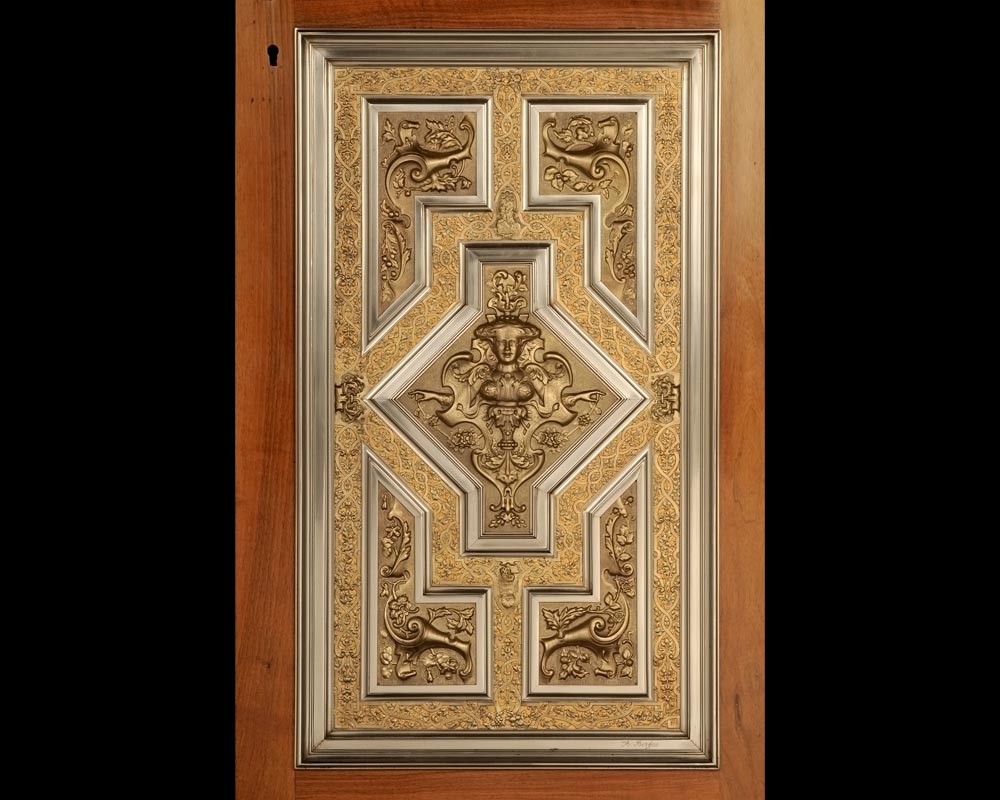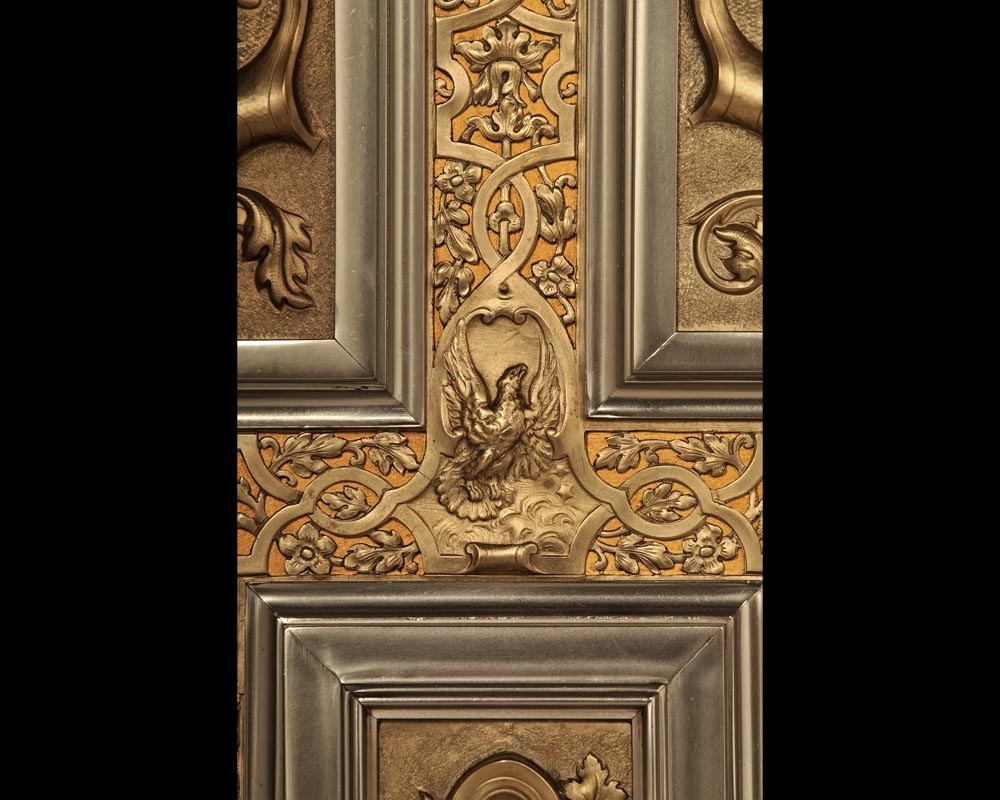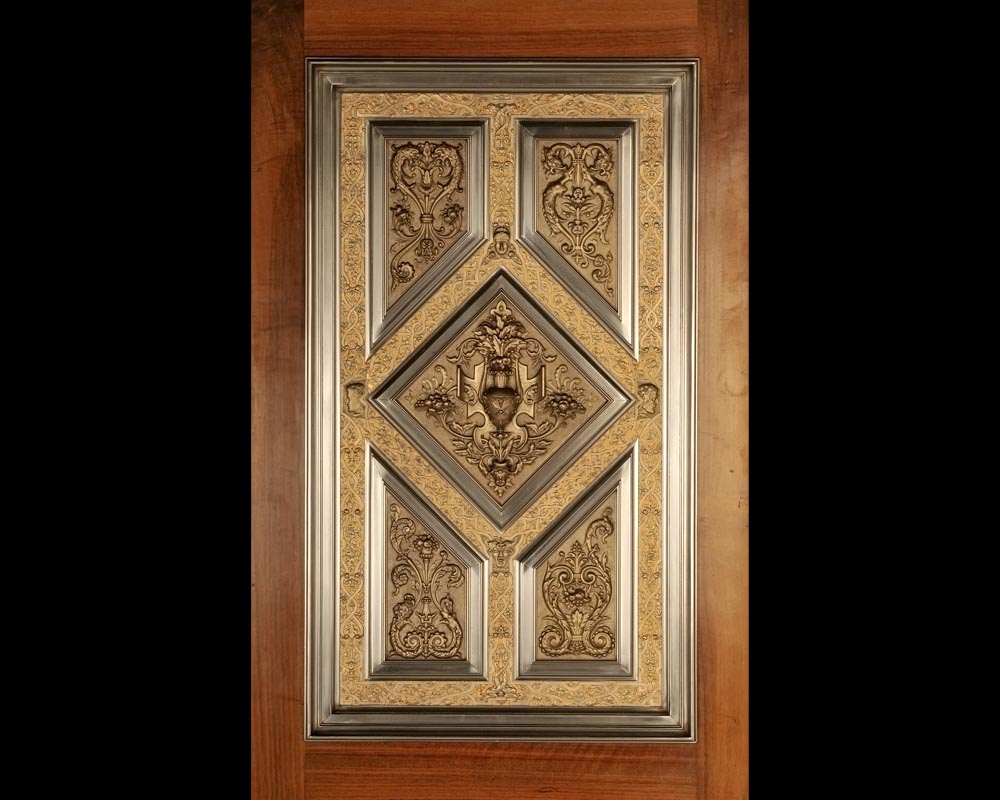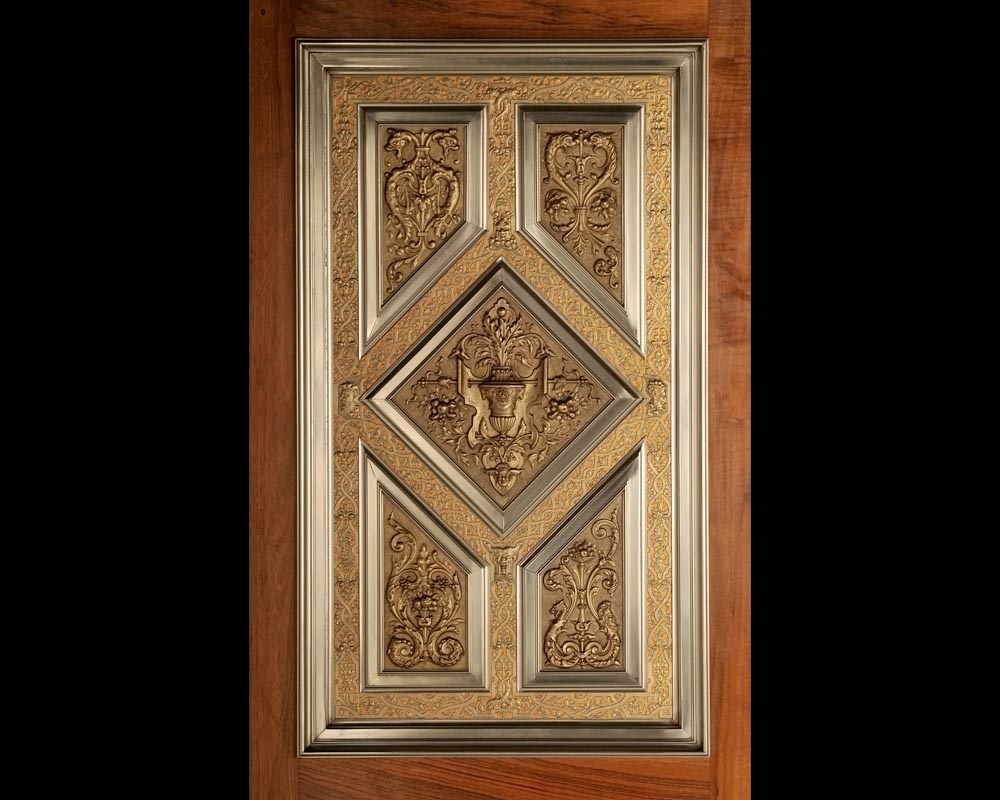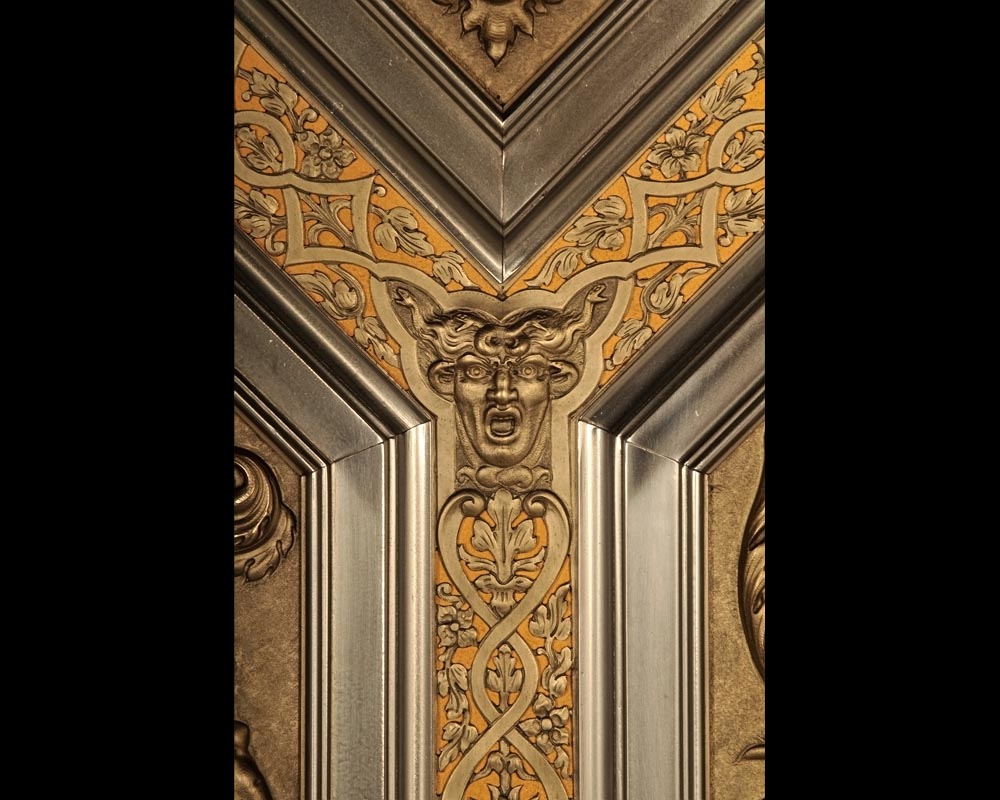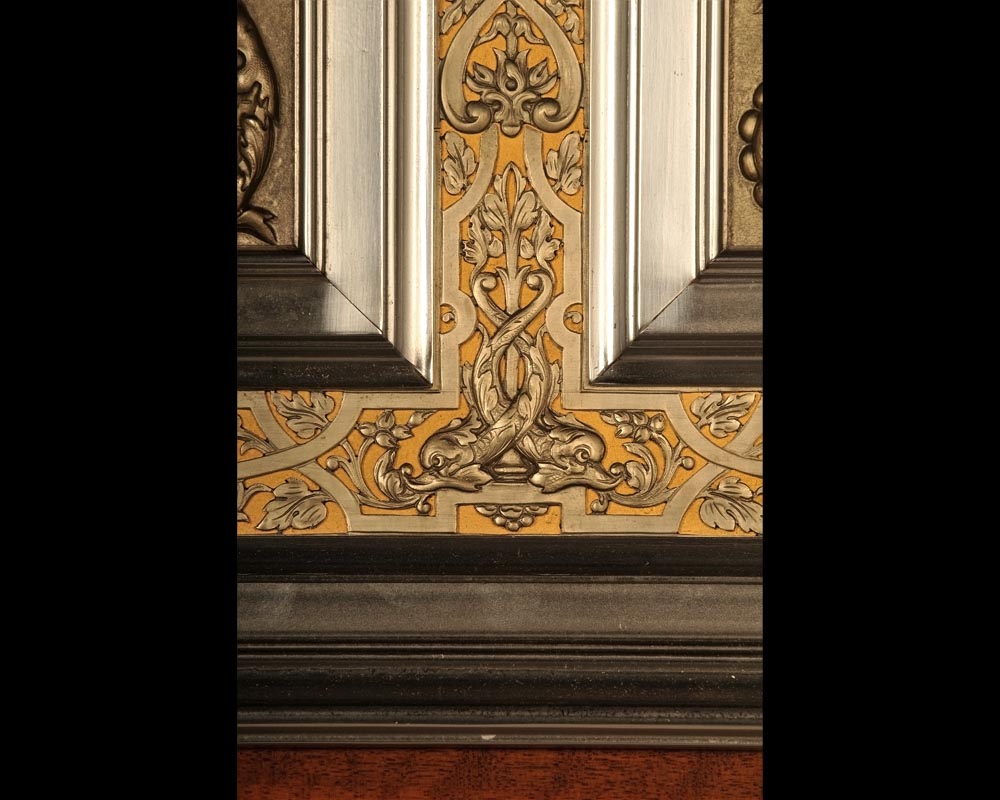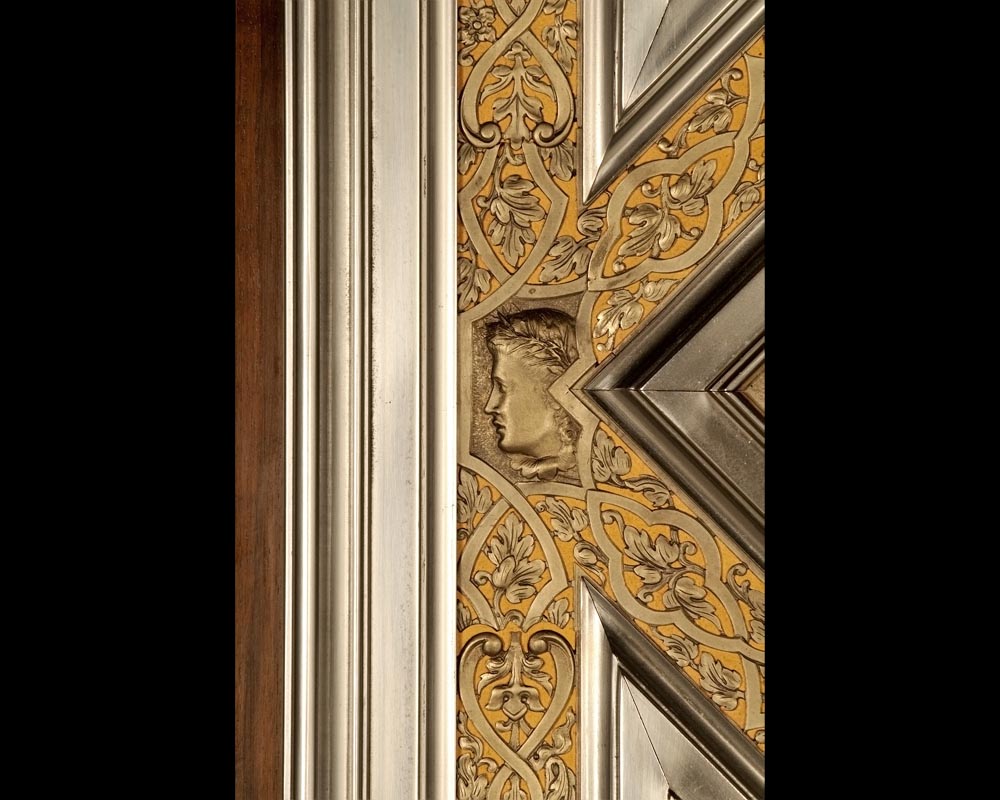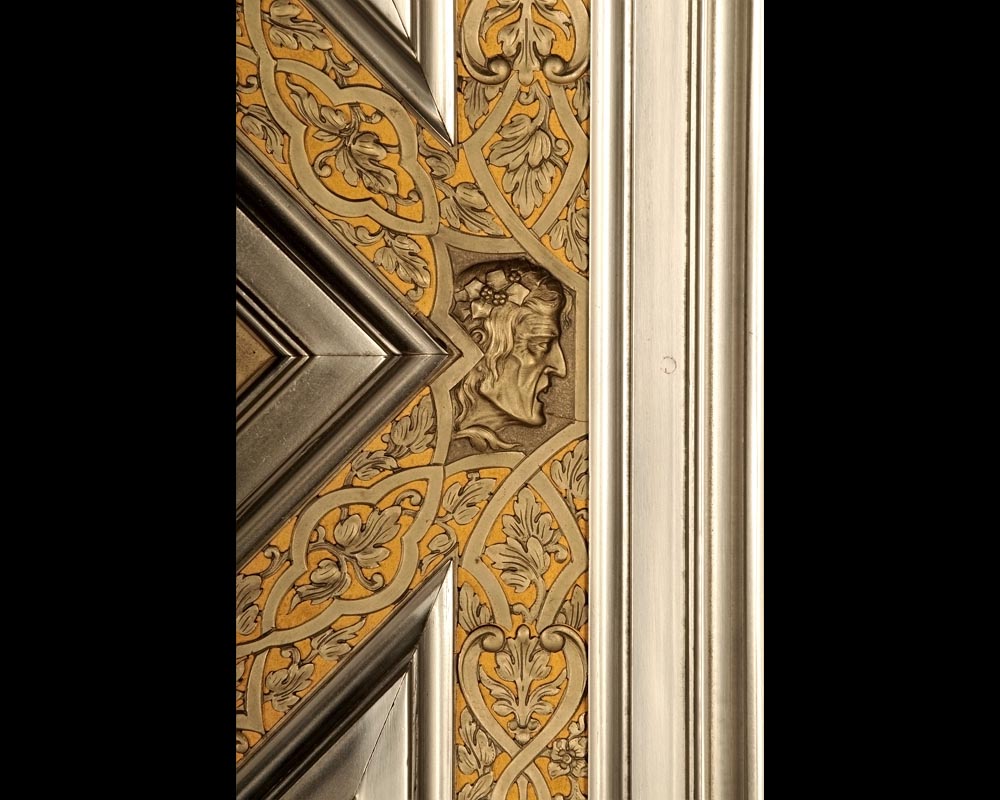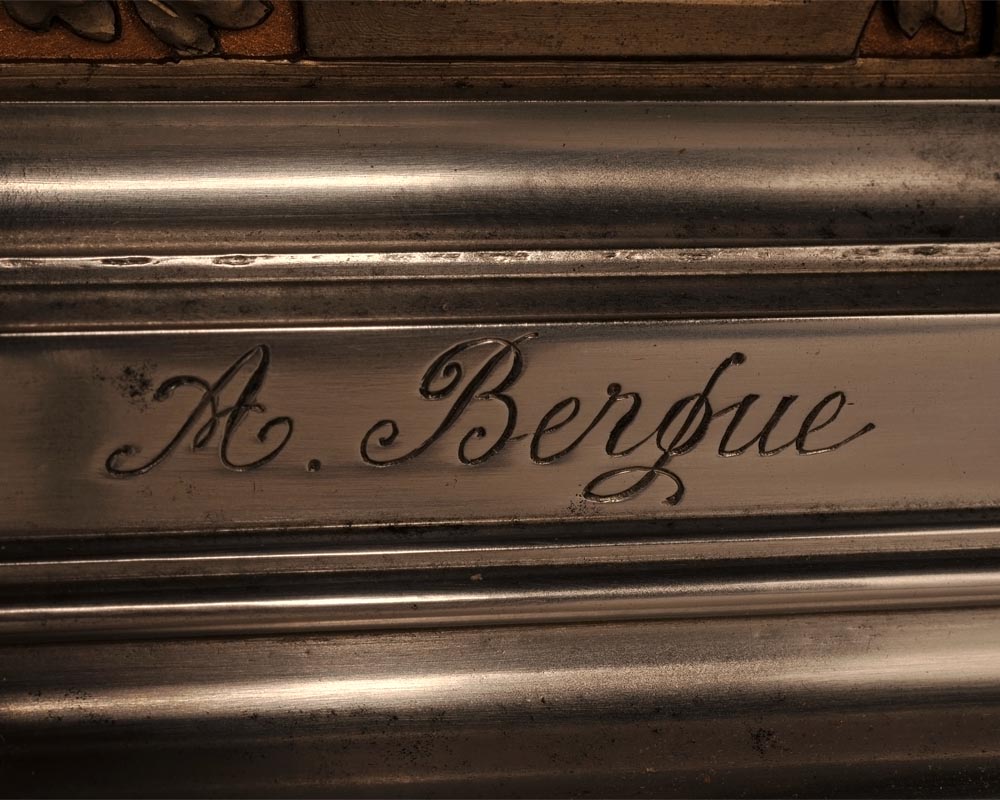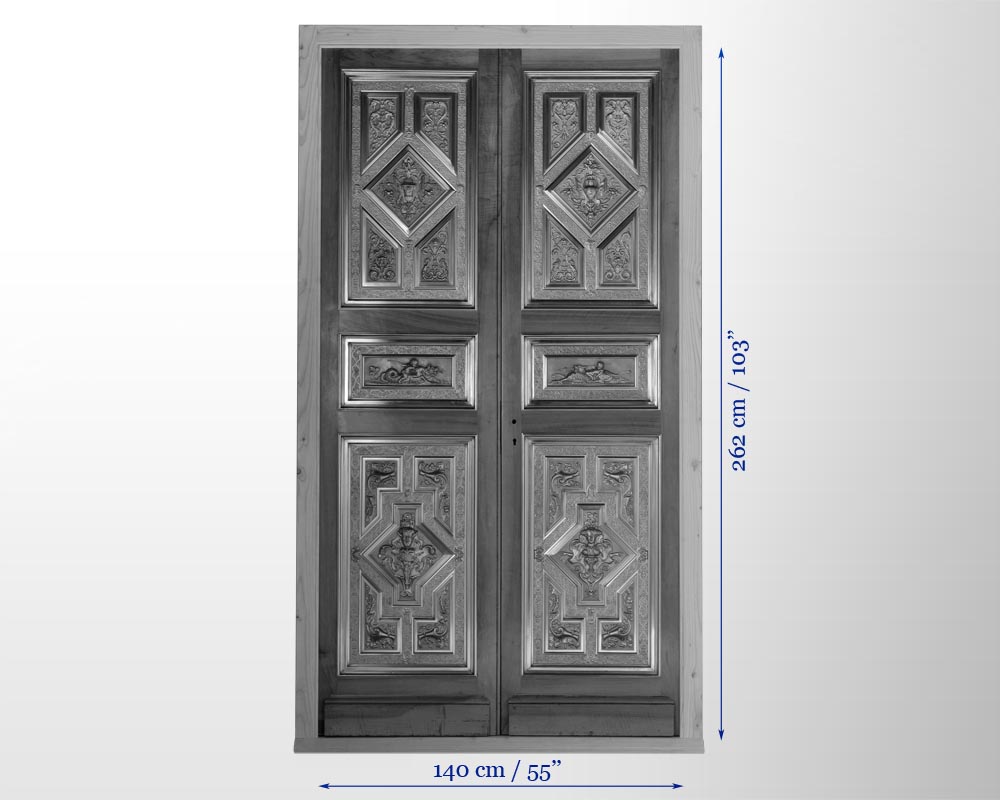Style Neo-Renaissance / Ref.17210
BERGUE Adolphe, An Exceptional Pair of Neo-Renaissance Doors
Dimensions
Width 55'' ⅛ 140cm
Height 103'' ⅛ 262cm
Origin:
Signed « A. Bergue »
Circa 1875.
American walnut, steel, embossed and hammered iron, nickel plated, gold polychromy
This spectacular pair of doors, made of embossed and hammered iron and decorated with neo-Renaissance motifs, owes its success to the interplay between the wood and the metal elements. The gilded background of the panels also allows each iron ornament to delicately stand out. Dolphins, medallions, shells and masks representing Silenus are found within the hand-embossed foliate decoration that has attained an exceptionally high quality of execution, comparable to steel Tula work produced in Russia. Adolphe Bergue also draws attention to the play of different visual effects by contrasting matt and polished finishes.
The composition strives to highlight themes inspired from Renaissance motifs and is an exceptional example of the taste for sixteenth century ornamentation that became fashionable in the 1830s and 1840s. The decoration of the compartments enjoys an overall harmony that avoids a servile repetition of the motifs used: each element of the ornamentation represents a slightly different variation. For example, on the upper part of the doors, the stylized dolphins are face-to-face in one compartment while back-to-back in the other. In the same way, the central compartments are decorated with different motifs: on one side there are vases set on a cartouche surrounded by foliage, while the other is decorated with a rod with hanging clusters of grapes. On the lower section, the left-hand door contains a figure of Silenus, crowned with grapes and holding a shield, while on the right-hand door, a feminine figure whose hair is dressed with flowers, extents her arms between the openings of the decorative scrolls.
The extremely high quality of metalwork demonstrates the great technical mastery of the ornamentation and is typical of Adolphe Bergue’s craftsmanship. These doors are, in fact, similar to an artist’s masterpiece.
Considered as a first class chaser in the second half of the 19th century, Bergue became famous thanks mainly to his work in decorative wrought iron. In 1877, Louis Enault wrote in his publication, Les Arts Industriels:
“I know of no other metal chaser who brings more delicacy, more care, or more consummate art to his work. The masters of the 16th century would have happily welcomed Mr. Bergue to their ranks and they would have saluted him as one of their own […] Without doubt, Mr. Bergue belongs to this valiant race of Cabeiri, the cousins of Vulcan and friends of fire, whose greatest joy was the combat with hard metal. He forges the metal resolutely and finished his pieces with chisel and file. These pieces never leave his hands without first having acquired the degree of perfection of which they are worthy – and which only he is capable of giving them. »
His work was singled out in each exhibition by the quality of its design, the delicacy of the ornamentation and the virtuosity of the metalwork. He was thus awarded a vermeil Medal of Excellence at the ninth exhibition of the Union Centrale des Arts Décoratifs. He also took part in the exhibition of decorative arts at New Bond Street in London, in 1881, before creating a balcony grille in wrought iron for the pavilion of the French commission at the Universal Exhibition of Amsterdam, in 1883.
Size: Height: 262 cm; Width of each panel: 70 cm



